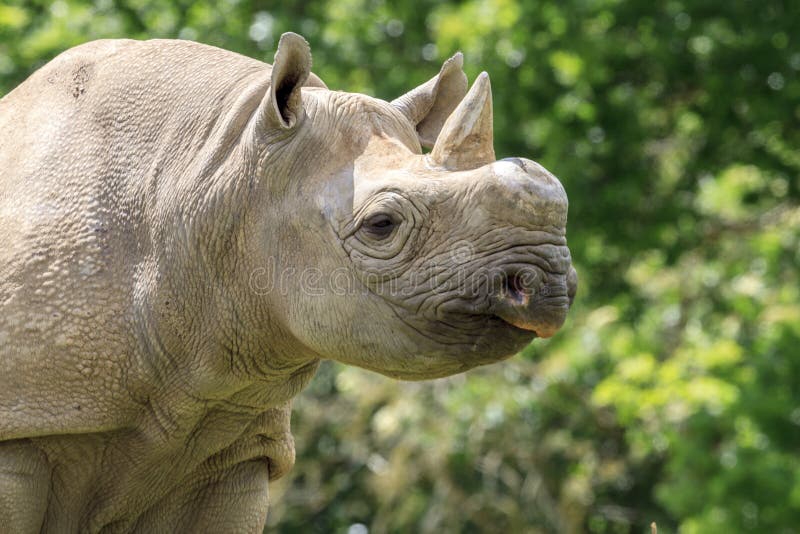

A population of currently 60 animals is kept outside its natural range in South Africa (Addo Elephant National Park). Generous core support for the Global Health Program’s training program is provided by Morris Animal Foundation and Dennis and Connie Keller.Once located in Ethiopia, Somalia, Tanzania, and Kenya, as of 2017 they can only be found in Kenya (594 animals), Rwanda and in northern Tanzania (80 animals).

Vitali’s fellowship is supported by a grant award from the Morris Animal Foundation and her research is part of ongoing partnerships with Kenya Wildlife Service, the network of rhino conservancies across Kenya, and many individuals and institutions dedicated to ensuring Eastern black rhino survive well into the future. Stay tuned for future updates on the Global Health Program’s work with rhinos! Dr. There is hope for rhinos, we just have to keep working! After more than a century of protection and successful translocations to other African countries, southern white rhinos are now the only species of rhino that is not endangered. This species was almost extinct in the late 1800s, with only a small population of about 100 individuals left in South Africa. When I need inspiration, I think about the southern white rhino. It is important we keep working to conserve them and hold on to hope for their future.
Eastern black rhinoceros full#
Working with black rhinos is exciting and full of emotions. If we are successful, the rhinos should be healthier and able to produce many calves in the future, contributing to greater conservation of their species!įor anyone aspiring to work with rhinos, be passionate and don’t give up in the challenging moments. With the help of the rangers, I will also observe the rhinos’ behavior after the translocation.
Eastern black rhinoceros how to#
Saliva and fecal samples, collected non-invasively, will help us study the rhino’s reaction on a biological level to the capture and translocation process and determine how to better perform the procedures. While our research is still in the early stages, the goal is to find a way to reduce these undesired affects. Increased stress can also slow down the rate of reproduction and, therefore, limit the number of calves born. They may experience immunosuppression-or the reduction of efficiency in the immune system-and have an increased chance to develop a disease from infections or parasites. Eastern black rhinos develop high levels of stress after a translocation which can lead to larger issues for the animals. Once the animal arrives to a new area, they can experience some stress. Working closely and collaboratively with Kenya Wildlife Service veterinarians, scientists and rhino experts becomes key to ensuring the safety of the rhinos and all human handlers throughout the entire translocation process. Because of side effects like this, it is important that the rhino is closely monitored during and after the translocation. When the drugs kick in, the rhino stops running but it’s normal rest and recovery is depressed by the anesthesia. I am also working with a team to figure out how to decrease the amount of stress and health consequences associated with the translocation of individual rhinos.īefore the translocation, a rhino’s stress comes when it is darted with the anesthesia and they instinctively run. One of these challenges is managing stress on the individual rhino before, during and after translocation. Unlike in a controlled, surgical space inside a veterinary or human hospital, there are many challenges in the field. My research focuses on how to make anesthesia safe for the rhinos in the field. If the rhinos are not sedated for the transport, they may hurt the team capturing them or try to break the transport crates and injure themselves. Although there are risks when using anesthetics, it is generally considered less stressful and safer.

Currently, the best way to move individuals from one protected area to another is to immobilize them using anesthesia.
.jpg)
To improve genetic exchange and to establish new protected areas for increasing the populations, the rhinos are translocated-or moved-between fenced protected areas.Įastern black rhinos are territorial and aggressive in addition to being incredibly large in size, so we take extreme care when working in the field with them. While these areas are great for keeping the rhinos safe, the rhinos are not able to migrate to different areas of their range and therefore cannot spread their genes as well. Each rhino has an individual ear notch pattern, which helps the rangers identify them. Armed Kenya Wildlife Service and wildlife conservancy rangers and advanced technologies monitor the rhinos daily, which includes keeping track of their well-being and confirming all individuals are accounted for. To help protect the rhinos from poaching in Kenya, they are kept in 16 fenced and highly protected areas.


 0 kommentar(er)
0 kommentar(er)
